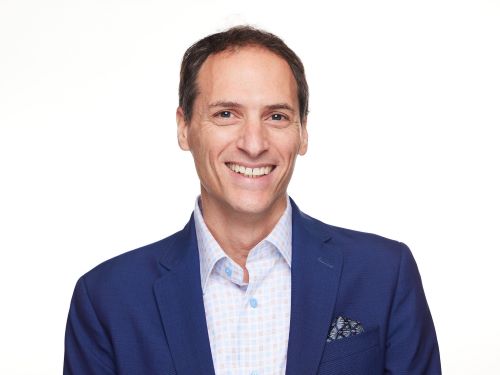Into The Later Years
About five years ago, Chicago’s Mayer, Brown, Rowe & Maw started what sounds like a golf tournament: the senior tour.
When a partner is about age 60, five years before mandatory retirement, that person is asked to meet with managing partner Debora de Hoyos or someone on the firm’s policy and planning committee to talk about the future. Some who expect to have a lot of momentum left in their practices at age 65 might already know they’ll want to get year by year waivers and keep working at the firm. Many retire at 65. Others might talk about leaving early.
One significant concern for the firm is what becomes of clients and client relationships when lawyers retire. Will the baton be passed on?
“We don’t want to be surprised,” says de Hoyos, who explains that the senior tour is evolving. “There’s a structure, though it’s quite informal. At least we have a name for it, and it establishes a set of expectations.”
There are as many ways of going about retirement from law firms as there are personalities and types of lawyers.
Some who never cared for mentoring the next generation don’t care much what comes of the firm and its clients when they leave. That’s when eat what you kill can eventually mean a final meal.
Some lay the groundwork for smooth transitions years before they leave. This includes cross selling and teams of lawyers offering depth in representation. The need for depth also brings up another potential problem: “You need to think about not only the transition of clients, but probably replacing expertise,” de Hoyos says.
Thoughtful Techniques
Though a structured approach to such matters within a law firm is probably best, some measures short of that can help with aspects of the baton passing.
At first blush, Gordon K. Davidson, chairman of 225 lawyer Fenwick & West in Mountain View, Calif., says retirement and baton passing are of no concern to the firm now. “We’ve only had one or two retirements in 32 years,” he says.
But when asked if that means there is a bulge of retiring lawyers to deal with in the near future, he thinks a moment and explains how such problems already are being handled. “It happens naturally,” Davidson says. “The key is institutionalizing the clients and making sure there are many points of contact.
Some firms’ compensation systems award business generation and responsibility for clients in a way that motivates partners to hoard clients. Our compensation system motivates people to share clients and rewards teamwork.”
The firm ensures that at least two partners are responsible for a client from the start, and that six to eight partners are usually directly involved with bigger clients. But still, a star lawyer can eclipse others in the client’s eyes, setting up transition issues.
Washington, D.C., lawyer lobbyist Victor E. Schwartz is widely known as “Schwartz on Torts” because of his high profile and his work as co author of the definitive casebook, Prosser, Wade and Schwartz’s Torts. Schwartz says he works carefully to ensure members of his six lawyer team get equal billing with him in the eyes of clients such as the American Tort Reform Association and the National Association of Manufacturers.
In June, Schwartz and another Shook, Hardy & Bacon lawyer, Phil S. Goldberg, met with the leaders of the Animal Health Institute, a new client. The person introducing him ticked off the usual list of Schwartz’s bona fides, including the casebook. “I could sense that he was about to say, ‘And this is his associate Phil Goldberg,’ ” Schwartz recalls. “So I quickly said, ‘May I introduce Phil?’ ” And Schwartz listed Goldberg’s own impressive credentials. “That lets them know that this is not Victor Schwartz and his flunky.”
There is one wrinkle, though. In 2001, Schwartz moved his practice and his team to the D.C. office of Shook Hardy after 21 years at another firm.
Thus the baton can slip from a law firm’s grasp.
“The proposition to institutionalize and retain has become more difficult now that it’s so easy for people to leave firms with portable work,” says Michael Alvarez, general counsel of Nexant Inc., a San Francisco based technology and consulting firm for the energy industry.
Alvarez says that probably is more significant for smaller companies like Nexant. “With larger corporations, such as international banks, there may be so much institutional learning that it’s difficult to change that relationship” and hire a new law firm, he explains. “It would be like changing auditing firms.”
The Real Boss
While law firms need to plan for transitions that keep the clients when the contact partners leave, there is another interested party: the client.“From time to time we have had, as does most every law firm, a partner heading to retirement who has worked with a younger partner on the client relationship and wants that to be the younger partner’s legacy. But they never really asked if it’s the client’s choice,” de Hoyos says. The hand picked successor might not be the one the client wants.
“It could be a wonderful younger partner but not the right fit,” she says. “There can be an abundance of good will, but it is a delicate process involving a number of people. The client has to be candid, too.”
And the client’s place in the equation can change quickly. “The tenure of the client’s managers tends to be much shorter than the tenure of partners,” Davidson says. “Anytime you get a new general counsel, CFO or CEO, it means a new client development effort. You need to convince the new people that you’re still the right choice for counsel.”



